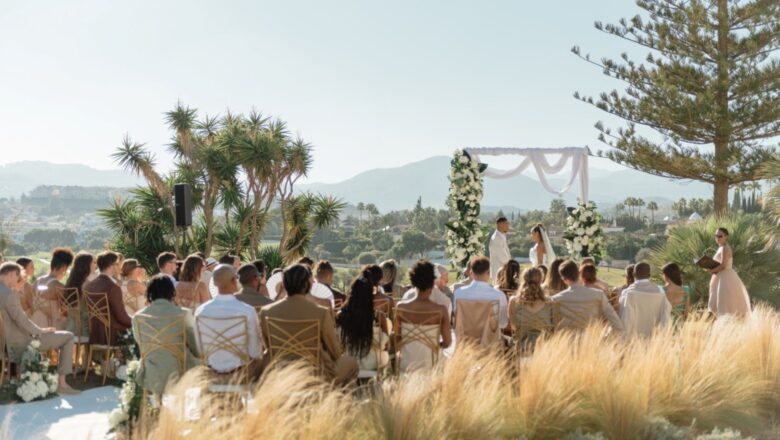Few travel experiences match the energy, rhythm, and emotion of marbella flamenco shows. In Marbella’s Old Town near Santo Cristo and across the Costa del Sol, you’ll find intimate venues where live flamenco unfolds at arm’s length and the audience can feel the floor crackle under footwork. If you want an authentic experience with dancers, singers, guitarists, and a band creating in the present moment, this guide will help you watch the best flamenco Marbella has to offer.
Marbella is located in Andalusia, the birthplace of flamenco in Spain. This town’s historic streets and seaside atmosphere set the stage for a night of singing, dancing, and guitar steeped in rich history. Whether it’s your first time or you’re already a fan, expect an unforgettable evening that blends art, passion, and duende.
Why Marbella Is Perfect for Flamenco: Setting, Soul, and Atmosphere
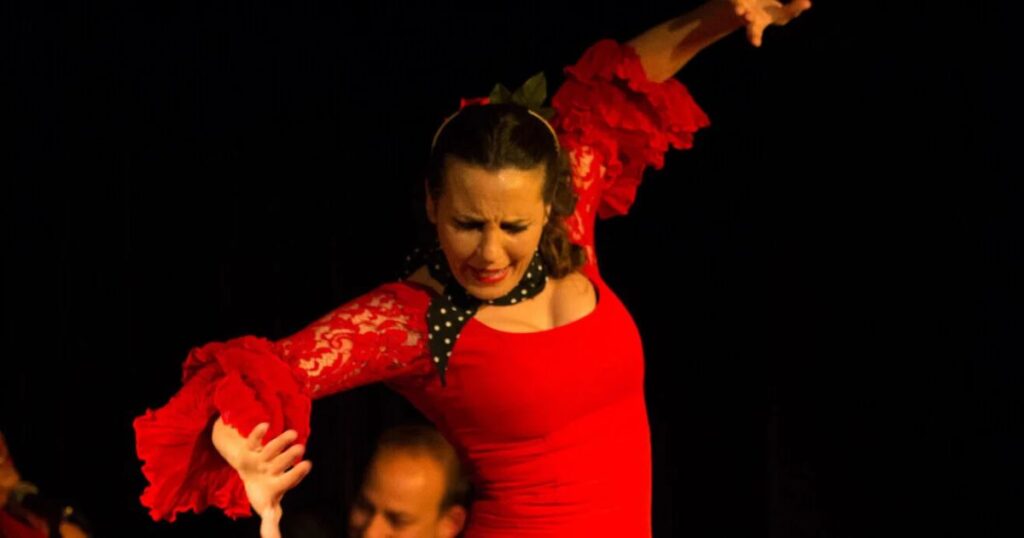
Marbella’s setting makes it a must visit for flamenco. The Old Town’s whitewashed walls and flowered balconies create charm, while the sea breeze and late-night culture amplify the music’s intensity. Venues are located close together, so you can stroll from dinner to a show without rushing through the center.
- Essence of place: Sea, sun, and stone streets shape the night’s atmosphere.
- Easy logistics: Short walks, reliable taxis, and many restaurants for a pre-show drink or bite.
- A living scene: Local artists share stages with guests from across Spain and abroad.
In the Santo Cristo area, small rooms keep you close to the action. You’ll sit within a few meters of the cast, which makes every heel strike, every breathy phrase of singing, and every guitar rasgueo feel personal. That proximity is where great flamenco often lives.
What Is Flamenco? The Art, History, and Duende
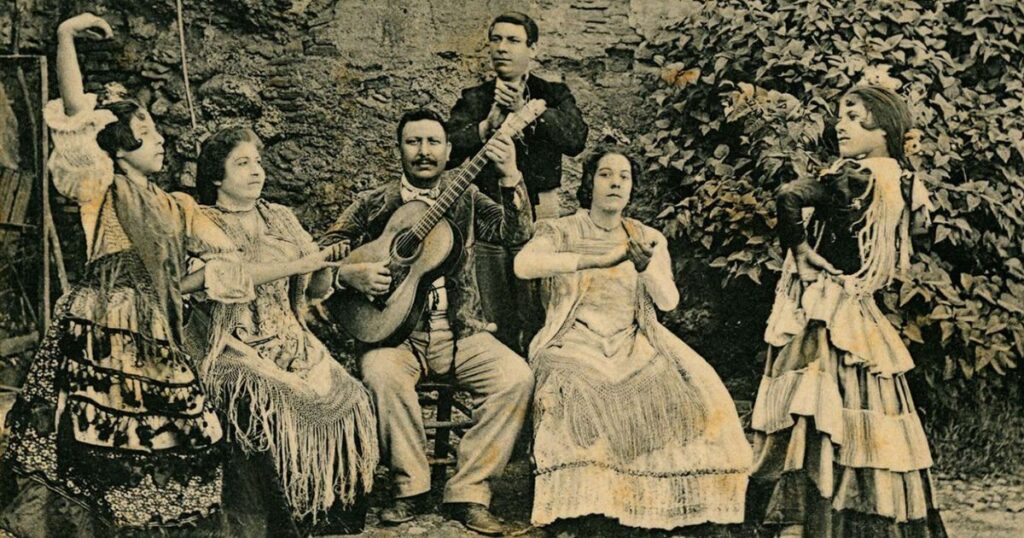
Flamenco blends three pillars: baile (dance), cante (singing), and toque (guitar). Around them are palmas (handclaps), jaleo (encouraging shouts), and the compás (rhythmic cycle) that anchors each palo (song form). When artists align, they create a shared story in real time.
- The elements:
- Dancers tell the story with posture, gesture, and footwork that becomes percussion.
- Singers carry the soul and lyrics; their voice is the emotional core.
- Guitarists weave melody and rhythm, cueing transitions and supporting dynamics.
- Palos you might hear: alegrías (bright), soleá (profound), bulerías (festive and fast), tangos (earthy), and more. Each has distinct rhythm, mood, and traditional structure.
- Duende: As poet Federico García Lorca wrote, duende is “a mysterious power which everyone senses and no philosopher explains.” It appears in a moment of risk and honesty when passion overwhelms polish. That’s the magic many visitors seek.
A quick history: Flamenco grew in Andalusia through centuries of cultural exchange, including Roma, Moorish, Jewish, and local Spanish influences. It moved from family patios and peñas to cafés cantantes, then to theaters and modern tablaos. Today it is recognized by UNESCO as Intangible Cultural Heritage, honoring its rich history and living tradition.
Types of Marbella Flamenco Shows (and Which One Fits You)
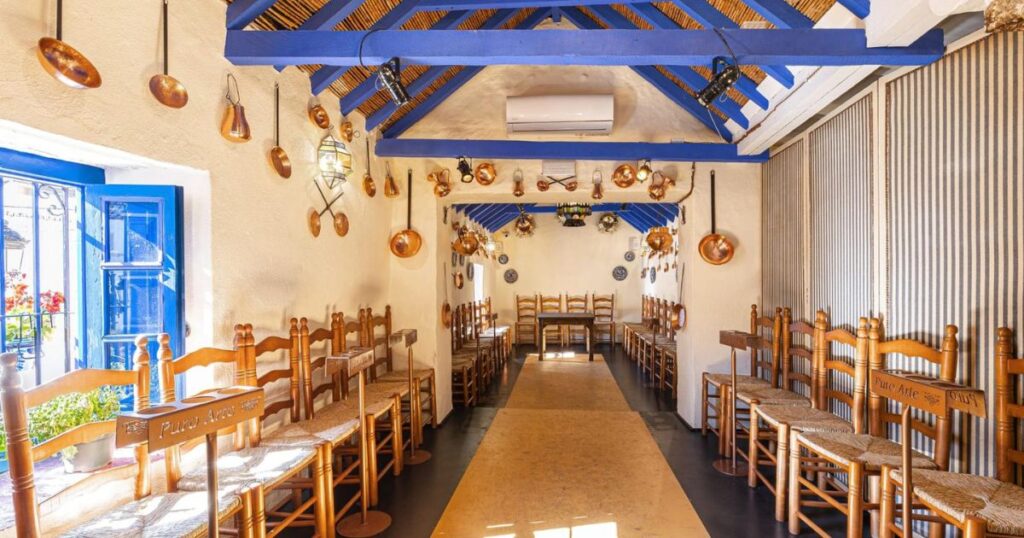
Different formats offer different ways to immerse yourself. Choose the atmosphere that matches your idea of the best flamenco show.
| Format | Atmosphere | Pros | Cons | Typical Price | Best For |
|---|---|---|---|---|---|
| Tablao flamenco Marbella (small venue) | Intimate, close to artists | Purest form, strong improvisation, see emotion up close | Limited seats, sell out fast | Mid to premium | First time fans seeking authenticity |
| Theater or Festival | Larger stage, amplified band | Big cast, dramatic lighting, comfortable seating | Less intimate; further from footwork | Mid to premium | Groups, families, big-event feel |
| Peña/Local Club | Community-led art | Local musicians, affordable, authentic vibe | Irregular schedules; basic amenities | Budget to mid | Culture lovers and repeat visitors |
| Street/Seasonal Show | Open-air, festive | Free or low cost, casual | Variable sound; weather dependent | Free to budget | Explorers wandering the town center |
Tips:
- For a purest form experience, a small tablao is ideal.
- For spectacle, look for festival lineups along the Costa del Sol and in nearby Málaga.
How to Choose the Best Flamenco Show and Venue
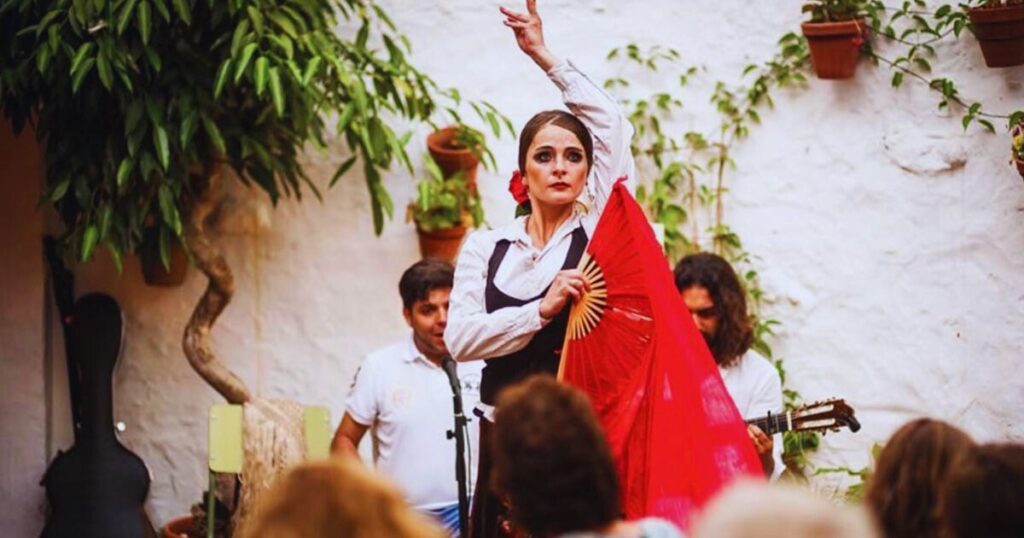
Selecting a venue determines your night’s feel. Look for signs of authentic flamenco and a strong cast.
- Signs of authenticity:
- Live musicians only—no playback.
- Dancers, singers, and guitarists visibly interact and take risks.
- The set list adapts to the mood; improvisation is welcome.
- Where to sit:
- Aim for a seat where you can watch both the dancer’s feet and the guitarist’s hands.
- Side seats can be excellent for footwork; front rows provide facial detail.
- Ask about pillars or obstructions before you book.
- Reading reviews:
- Look for mentions of “improvisation,” “connection,” “energy in the room,” and “in the moment.”
- Glowing notes about a specific singer’s power or a dancer’s footwork can be reliable signals.
When great flamenco happens, the audience feels the tension lift as the cast locks together. Jaleo—short, sincere shouts like “olé” or “vamos”—often emerges from the artists first. That’s a cue you’re witnessing the art being created in the present.
What to Expect at a Flamenco Show (First Time Guide)
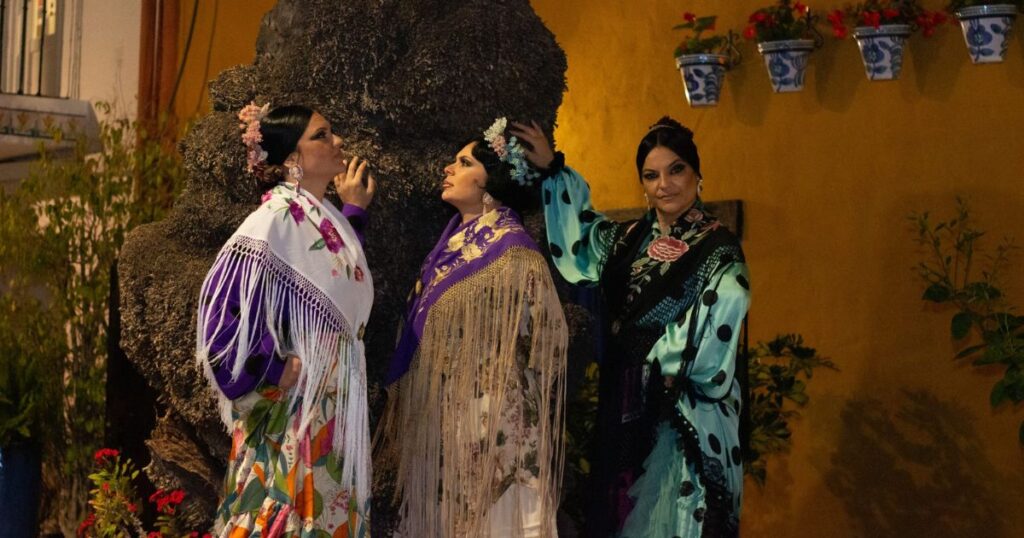
A typical show spans about an hour to 90 minutes. It often opens with guitar and song, then moves through dancing solos, duets, and a finale with the full cast and band. Expect a slow build of emotion and rhythm until the room is electric.
Etiquette for visitors:
- Keep voices low during singing; the quiet is part of the art.
- Avoid flash photography. Follow the venue’s rules on video.
- Clap for crisp footwork, strong singing lines, and guitar solos. Respect the artists and the moment.
Family tips:
- Children are welcome at many venues; earlier shows are best.
- Volume can peak during finales; consider light ear protection for sensitive ears.
- Sit near an aisle if you anticipate movement.
Accessibility and language:
- The story lives in the music and movement, so Spanish isn’t required to enjoy it.
- Ask about step-free access and seating types when you book.
Flamenco Venues in Marbella:
Tablao flamenco Marbella
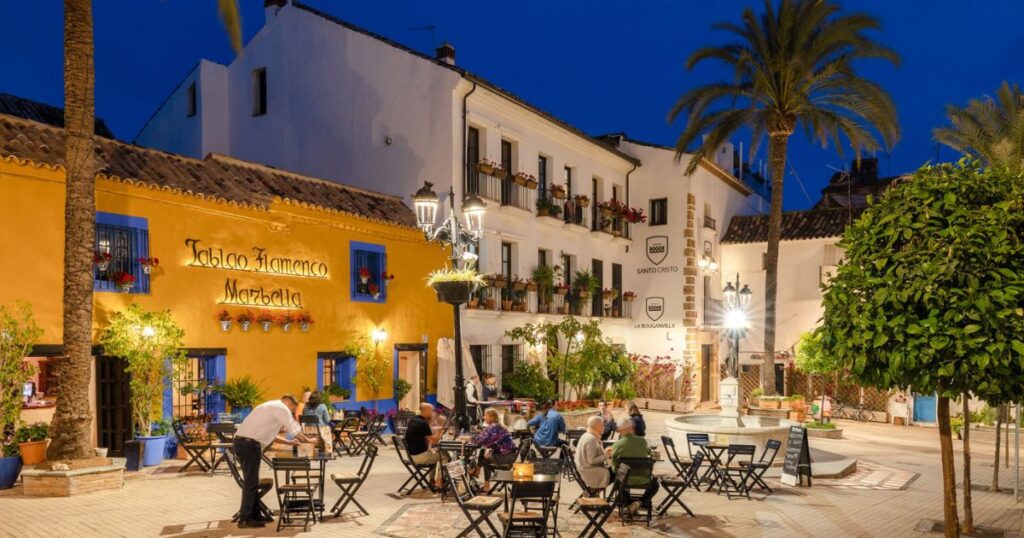
An intimate tablao in Marbella’s Old Town,(Plaza del Santo Cristo,4), known for close-up, live flamenco with a rotating cast of dancers, singers, and guitarists. Expect 60–90 minutes of authentic flamenco in the purest form, strong improvisation, and a focused atmosphere where the audience sits just meters from the action. A great choice for first-time visitors who want a classic tablao flamenco marbella experience.
- Best for: Authenticity, small-room magic, marbella flamenco shows up close.
- Good to know: Limited seats; book early for front rows and a welcome drink if offered.
Asador Puerta del Príncipe – Tablao Flamenco Ana María Los Chatos
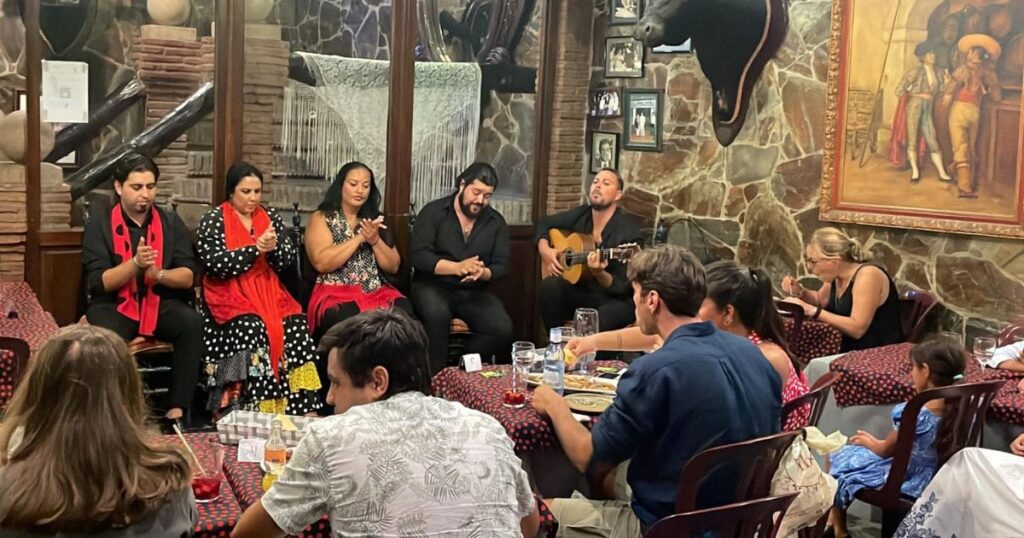
A traditional asador that hosts the historic Tablao Flamenco Ana María Los Chatos, pairing Spanish cuisine with a live flamenco show. The venue blends dinner and performance, so you can settle in for a relaxed evening of singing, dancing, and guitar on the Costa del Sol. It’s ideal if you want a seated dinner-and-show format with classic ambiance.
- Best for: Dinner + show, groups, visitors who want a full night in one venue.
- Good to know: Confirm sightlines and whether your ticket includes a drink or set menu.
The Farm Marbella – Espectáculo Flamenco
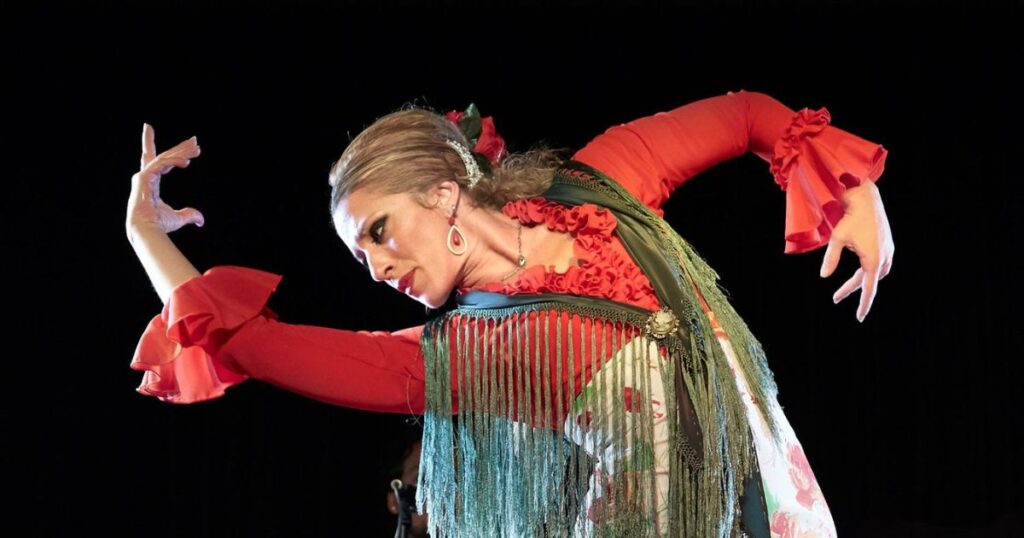
A charming, courtyard-style restaurant that stages an espectáculo flamenco with a farm-to-table touch. The vibe is warm and local, with options for vegetarians and families, and a show that balances narrative, rhythm, and passion. It’s a friendly setting to immerse yourself in live flamenco without feeling rushed.
- Best for: Casual dinner, families, first-time guests seeking an authentic experience.
- Good to know: Check seasonal schedules; arrive early to enjoy the courtyard atmosphere.
Passion: The Story of Flamenco
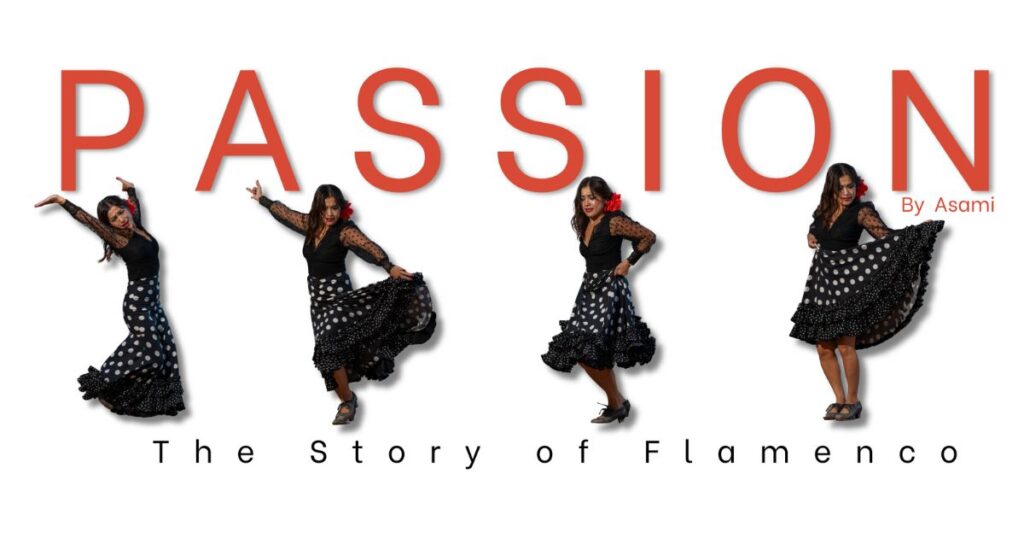
A narrative-driven production that appears in Marbella and around the Costa del Sol, combining dance, singing, and storytelling to trace flamenco’s rich history. Expect polished staging, a larger cast, and a theatrical arc that guides the audience through styles and emotion. This is a memorable option if you want a big-event feel and a clear storyline.
- Best for: Theater lovers, culture-focused visitors, those curious about flamenco’s history.
- Good to know: Venue and dates vary by season; verify location, run time, and seats in advance.
Booking Tips for Marbella Flamenco Shows
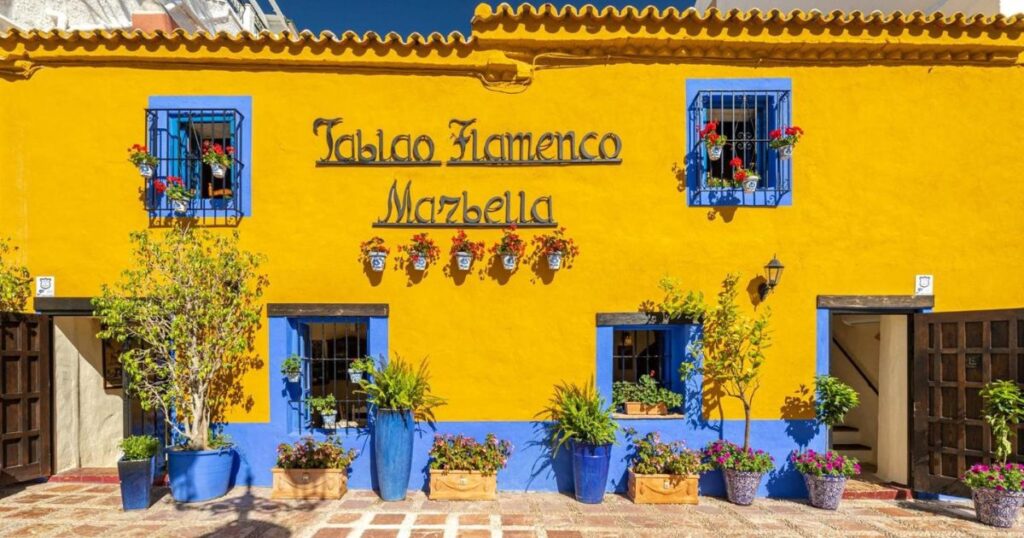
- High season and weekends sell fast—reserve 3–7 days ahead for the best seats.
- Check cancellation policies; flexible tickets help if plans change.
- VIP vs. Standard: In small rooms, front rows are often worth it to watch intricate footwork.
- Groups and private events: Many venues can arrange a dedicated show or early start time.
What’s included: Some tickets include a drink, tapas, or full dinner. Confirm in advance, especially if you’re planning a special night to immerse yourself in the atmosphere.
Dinner + Show: Planning an Unforgettable Evening
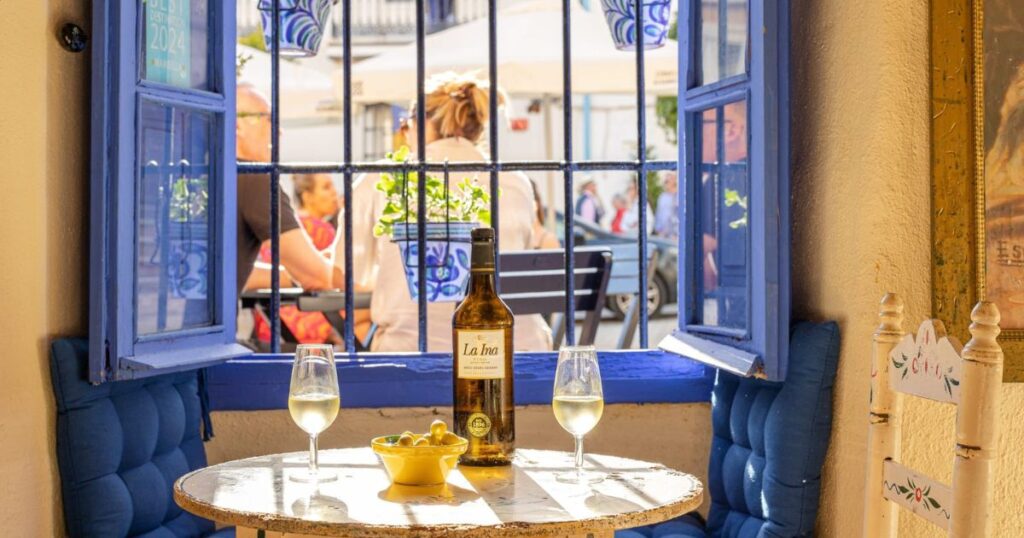
A well-paced night elevates the experience. Start with a golden-hour walk through the Old Town’s streets, then a relaxed Spanish dinner before the show.
- Tapas ideas: Jamón ibérico, tortilla, salmorejo, croquetas, aubergine with honey.
- Mains: Grilled local fish, oxtail stew, seasonal Andalusian plates.
- Drinks: Fino or manzanilla sherry with tapas; Spanish reds or a refreshing tinto de verano.
After the event, stroll the center for a nightcap and let the magic settle. The best memories often arrive in the quiet after a powerful performance.
Meet the Artists: Dancers, Singers, and Guitarists
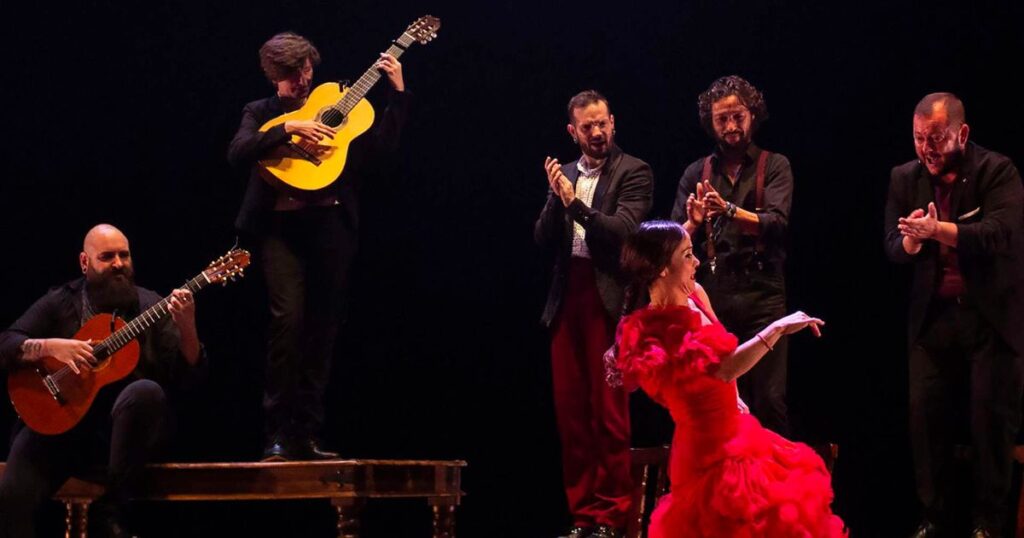
- Dancers (bailaores/bailaoras): They translate music into motion. Footwork becomes percussion, while posture and gesture convey story and emotion. Look for controlled turns, crisp heelwork, and expressive hands that frame the song.
- Singers (cantaores/cantaoras): They carry the soul and the story. The voice can break into raw, textured lines that speak of love, loss, and pride. Even without Spanish, you’ll feel the emotion in the phrasing and breath.
- Guitarists (tocaores): They are the engine of compás and melody. Watch the right hand for rasgueos that drive rhythm, and the left for fast falsetas that lift the mood. Great guitarists cue entrances and calibrate the band’s dynamics.
- The band as conversation: Flamenco is collaborative improvisation. A dancer lays down a heel pattern; the singer stretches a phrase; the guitarist answers with harmony. In a great flamenco show, you witness the art being created live.
Global reach: Flamenco’s influence travels far, with dedicated communities from Spain to Japan. In Marbella, you’ll often meet local talent sharing the stage with visiting artists, a mix that keeps performances fresh.
Authenticity vs. Showmanship: Finding the Purest Form for You
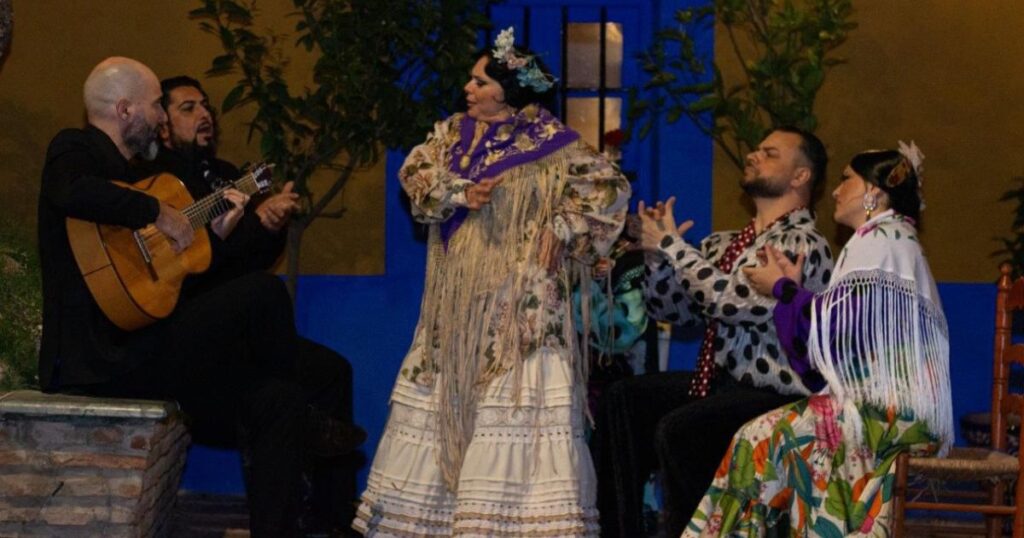
Authentic flamenco and polished showmanship are not opposites. Many of the best performances balance both.
- Small rooms, big impact: Close seating magnifies nuance—breath, sweat, micro-phrases of singing, and the dancer’s tiny adjustments that reveal intention. This is often where the essence and authenticity appear.
- Larger productions, larger arc: Theaters can deliver sweeping, dramatic arcs with a bigger cast. Strong direction, excellent singers, and top guitarists can move a large audience deeply.
- A working philosophy: Authenticity is about presence more than costume. It’s the honesty of risk, emotion, and connection in the present. When the room goes quiet and then erupts, you’ve found the purest form.
Practical Tips: From First Time to Fluent Fan
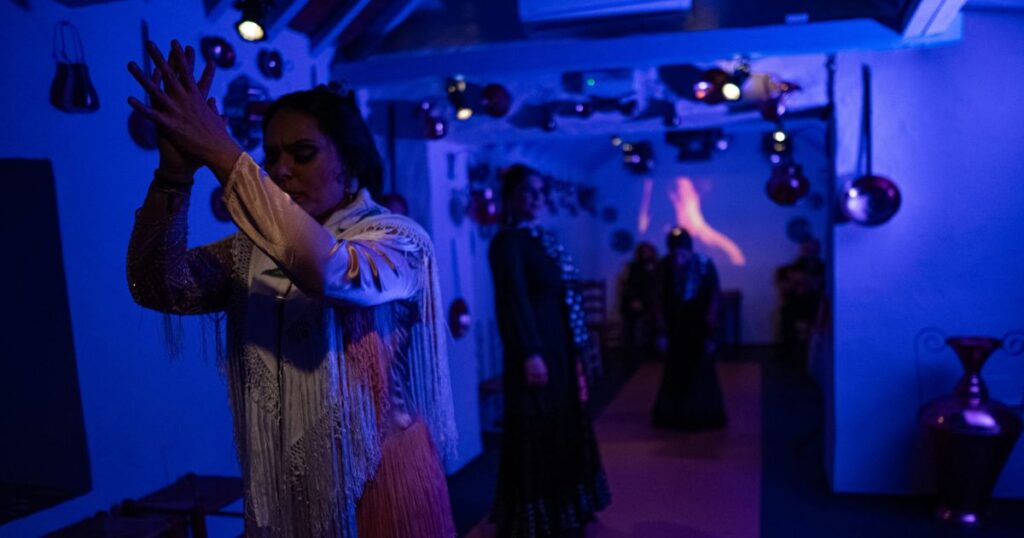
Before you go:
- Arrive 15–20 minutes early; sit close if you can.
- Smart casual is perfect; bring a light layer for cool nights.
- Phones silent; no flash; a small bag is considerate in tight seating.
During the show:
- If you clap along, watch the palmas of the musicians and follow.
- Jaleo is welcome when short and sincere—“olé,” “vamos,” “eso”—in rhythm and with respect.
- Savor quiet moments; speaking over cante breaks the story.
After the show:
- Thank the staff, and if you loved the cast, ask who performed and follow the artists.
- Supporting musicians directly helps the local scene thrive.
Featured Snippet Q&A: Quick Answers About Flamenco Marbella
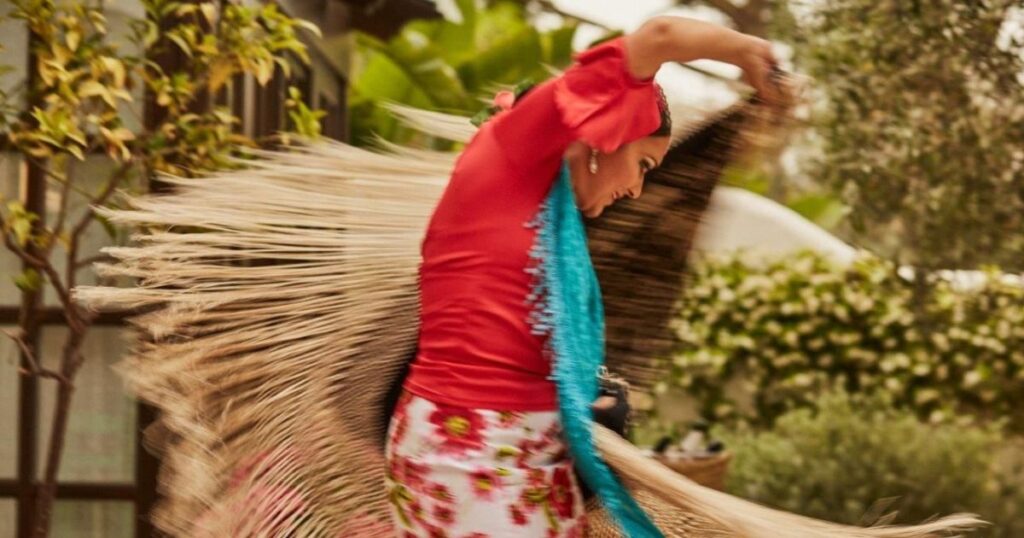
- How long is a flamenco show in Marbella?
- Most run 60–90 minutes, often with a brief interlude.
- Where are the best areas to watch flamenco in Marbella?
- Old Town near Santo Cristo, the town center, Puerto Banús, and peñas in San Pedro de Alcántara.
- What should I wear to a flamenco show?
- Smart casual. Comfortable shoes. Avoid large hats that block views.
- Is dinner included with tickets?
- Some tickets include a drink or tapas; others have full dinner packages. Check details when booking.
- Can children attend?
- Yes. Choose earlier shows and consider aisle seats if someone may need a break.
- Do I need to speak Spanish?
- No. The emotion, rhythm, and story travel beyond language.
A Short Glossary (Learn Faster, Enjoy More)
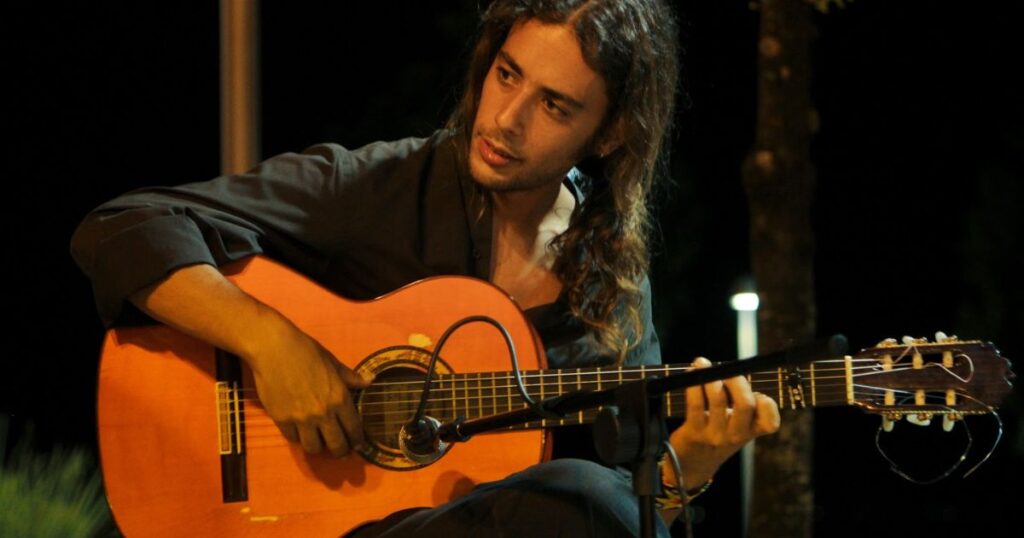
- Baile: Dance.
- Cante: Singing.
- Toque: Guitar playing.
- Compás: The rhythmic cycle—the heartbeat of the music.
- Palmas: Handclaps that mark rhythm.
- Jaleo: Encouraging shouts from artists and audience.
- Palos: Song forms such as soleá, alegrías, bulerías, tangos.
- Duende: The ineffable force that moves artists and audience—the night’s magic.
External Links
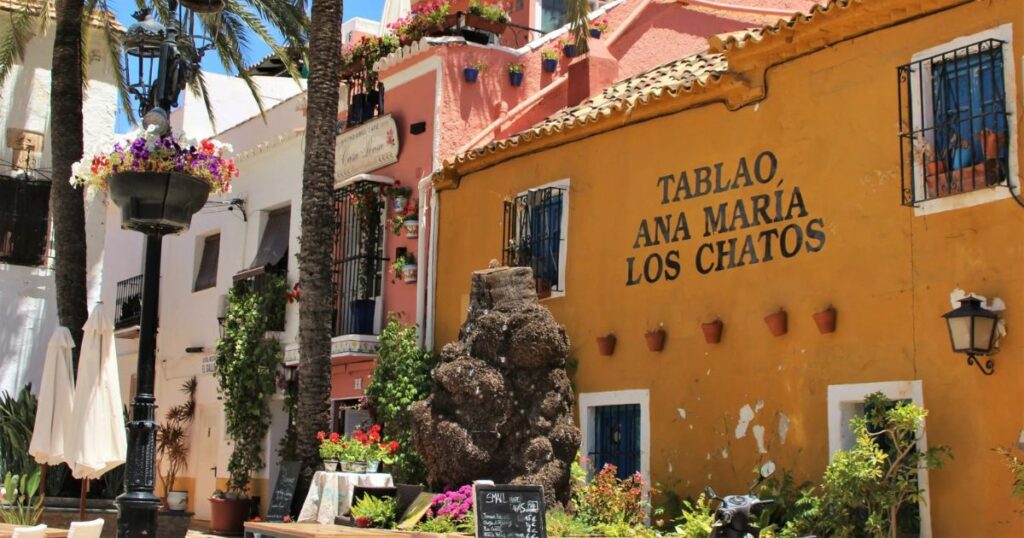
- UNESCO: Flamenco (Intangible Cultural Heritage) — https://ich.unesco.org/en/RL/flamenco-00363
- Instituto Andaluz del Flamenco — https://www.juntadeandalucia.es/cultura/flamenco
- Marbella Guide — https://marbelladreamvillas.com/blog/
- Málaga Tourism — https://www.malagaturismo.com
Timeline: Flamenco’s Rich History in Andalusia
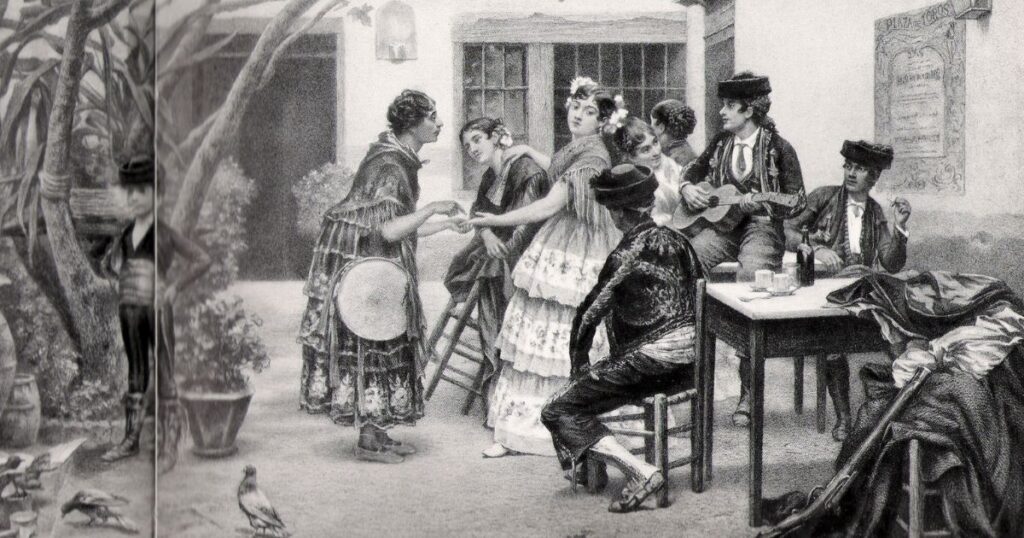
| Period | What Changed | Impact on Today’s Performances |
|---|---|---|
| 18th–19th centuries | Family patios, peñas, cafés cantantes emerge | Small-room aesthetics prized; community roots remain central |
| Late 19th–Early 20th | Professionalization and touring circuits | Larger casts, staged productions, broader audiences |
| Mid-20th century | International recordings and festivals | Global reach; refinement of stagecraft and technique |
| Late 20th–21st | Fusion with jazz/world music; global artists | New ideas and virtuosity while preserving core compás |
| Today (Marbella) | Mix of tablaos, theaters, festivals | Visitors choose their preferred atmosphere—from purest form to big-event spectacle |
Frequently Noted Names and Stories (Lore and Legends)
Marbella and nearby Málaga often welcome international visitors and artists, and the lore around certain venues adds to the charm. You may hear stories of famous guests like Princess Margaret or members of the Kennedy family, or of cultural patrons such as Antonio Banderas supporting the arts in Málaga. These anecdotes are part of the story; if details matter to you, ask the venue about the history behind their claims.
Conclusion: Plan Your Unforgettable Evening of Flamenco in Marbella
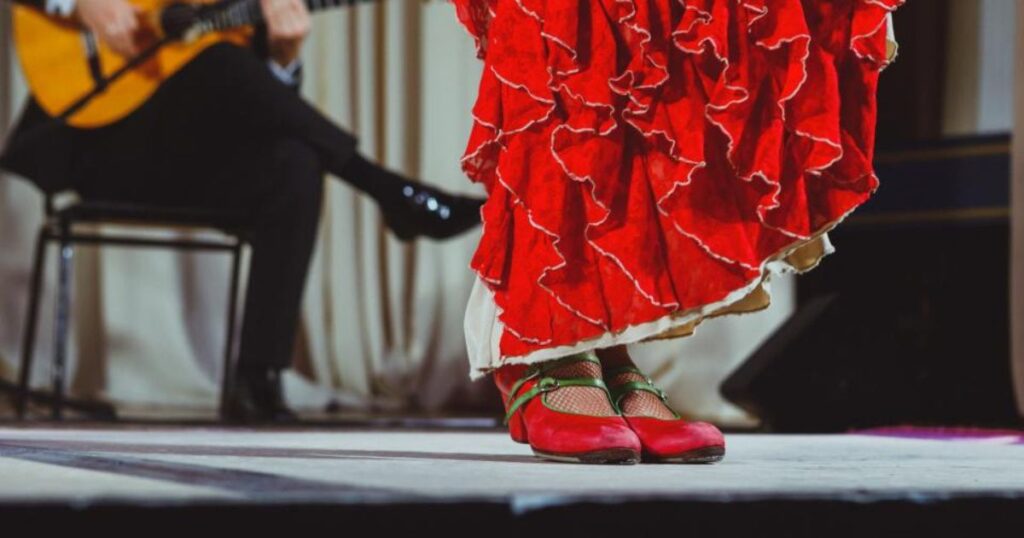
Marbella flamenco shows blend music, dancing, and singing into an art of passion and presence. Choose a tablao flamenco marbella in the Old Town for an authentic flamenco experience in the purest form, or book a theater night if you prefer a larger cast and production. Either way, you’ll witness artists creating in the moment, feel the rhythm through your seat, and carry the story with you into the night.
Book early, sit close, and let the duende guide you. With the right venue, a thoughtful dinner plan, and a bit of curiosity, you’ll discover why flamenco marbella remains a must visit on the Costa del Sol—and why so many visitors return for another unforgettable evening at the heart of Spain’s soul.
